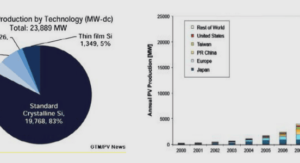Sommaire: An Evaluation of Time Series Models
Introduction
1 Review of literature
1.1 Univariate models
1.2 Forecast combinations
1.3 Alternative forecasting methods
2 Econometric Methodology
2.1 Harmonic regression model
2.2 Holt-Winters exponential smoothing model
2.3 Univariate time series models
2.4 Forecasting combination techniques
2.5 Forecasting performance criteria
3 Data
4 Results
4.1 Single model estimations
4.2 Combination forecasting techniques
Conclusion
Bibliography
♣ Extrait du mémoire
Chapter 1: Review of literature
1.1 Univariate models
There is a large amount of literature regarding tourism and air passenger forecasting with univariate time series and smoothing techniques. Most published studies tend to concentrate on three specific regions: the United States, Europe and the Asia Pacific region (Oh and Morzuch,2005;Lim and McAleer,2002;Andreoni and Postorino,2006;Coshall,2006;Chen et al.,2009). To our knowledge, the lone study on Canada is the work ofEmiray and Rodriguez(2003). These authors provide monthly forecasts of enplaned/deplaned air passengers for three market segments (domestic, international and transborder flights), based on data covering the period ranging from January 1984 to September 2002.
They consider six time series models (AR(p), AR(p) with seasonal unit roots, SARIMA, periodic autoregressive model (PAR), structural time series model (STSM) and the seasonal unit roots model) as well as the simple average combination method. They conclude that forecasting performance depends on two key elements: the market segment considered and the forecasting horizon.Emiray and Rodriguez(2003) also show that short memory models are better for short term forecasting whereas long memory models are better for long term forecasting. Their paper did not consider smoothing forecasting techniques.
ARIMA and SARIMA models are among the most widely used in the air passenger forecasting literature.
According toZhang(2003), their popularity comes from the fact that they are based on very few assumptions. Furthermore, they are easy to specify with the recursive Box-Jenkins methodology.
Many studies have examined the performance of ARIMA and SARIMA models for predicting air traffic flows. For example,Coshall(2006) forecasts air travel from the United Kingdom to twenty destinations using quarterly data of UK outbound air travelers with several models, which include: the Naive 1 model, the Naive 2 model1, the Holt-Winters model and a variety of ARIMA models. The Root Mean Squared Error (RMSE) suggests that the ARIMA model outperforms the other modelsfor all destinations except one. This is true for both additive and multiplicative seasonality models.
Andreoni and Postorino(2006) use the yearly data of planed/enplaned passengers at Reggio Calabria airport in the South of Italy to forecast air transport demand. Two univariate ARIMA models and a multivariate ARIMAX model with two explanatory variables (mainly per capita income and the number of movements both to and from Reggio Calabria airport) are used to generate forecasts. The authors conclude that all three models offer accurate forecasts.Kulendran and Witt(2003) generate one, four and six quarter ahead forecasts of international business passengers to Australia from the following four countries: Japan, New Zealand, the United Kingdom and the United States. They consider various forecasting models: the error correction model (ECM), the structural time series model (STSM), the basic structural model (BSM), no change models as well as various ARIMA models. They conclude that forecasting performance varies with the forecasting horizon and depends on the adequate detection of seasonal unit roots. Consequently, ARIMA and BSM models are the most accurate for short term forecasting (one-quarter ahead) whereas the seasonal no change model outperforms the other models for medium term forecasting (four and six quarters ahead).





